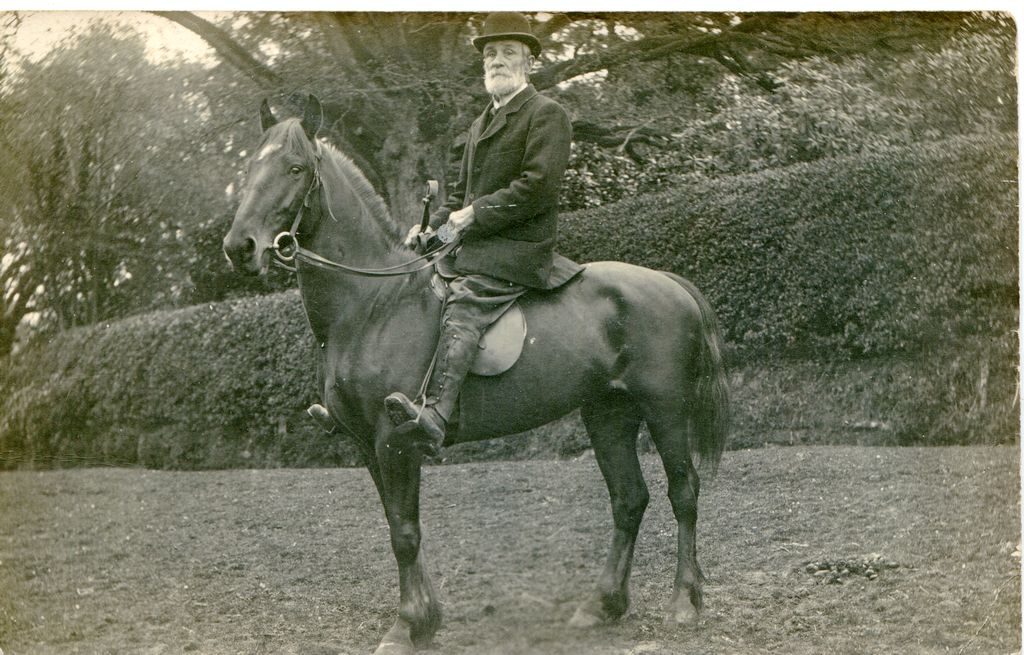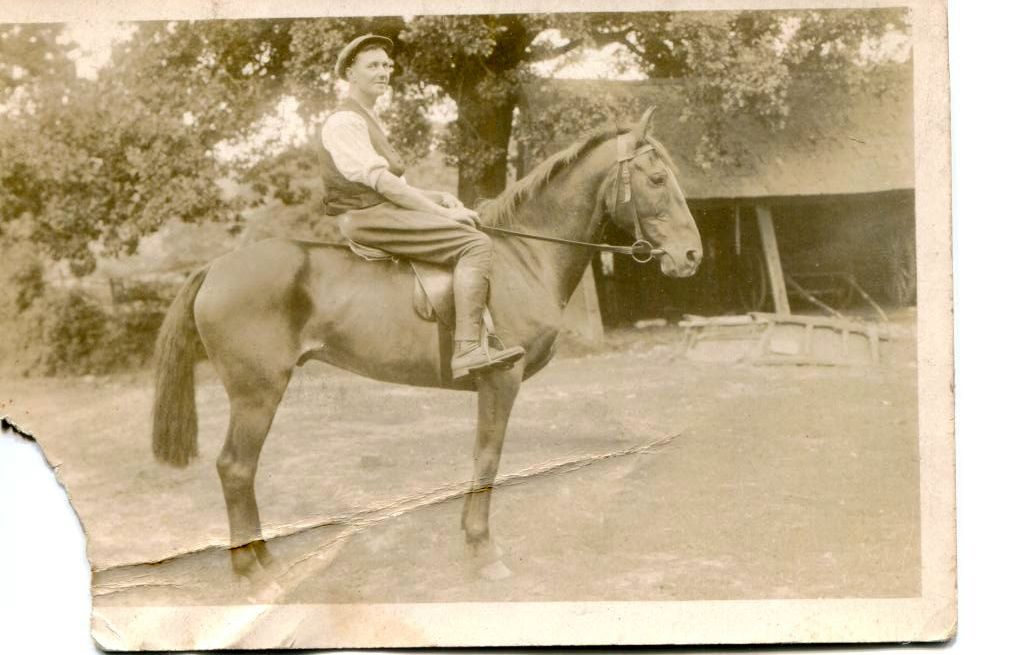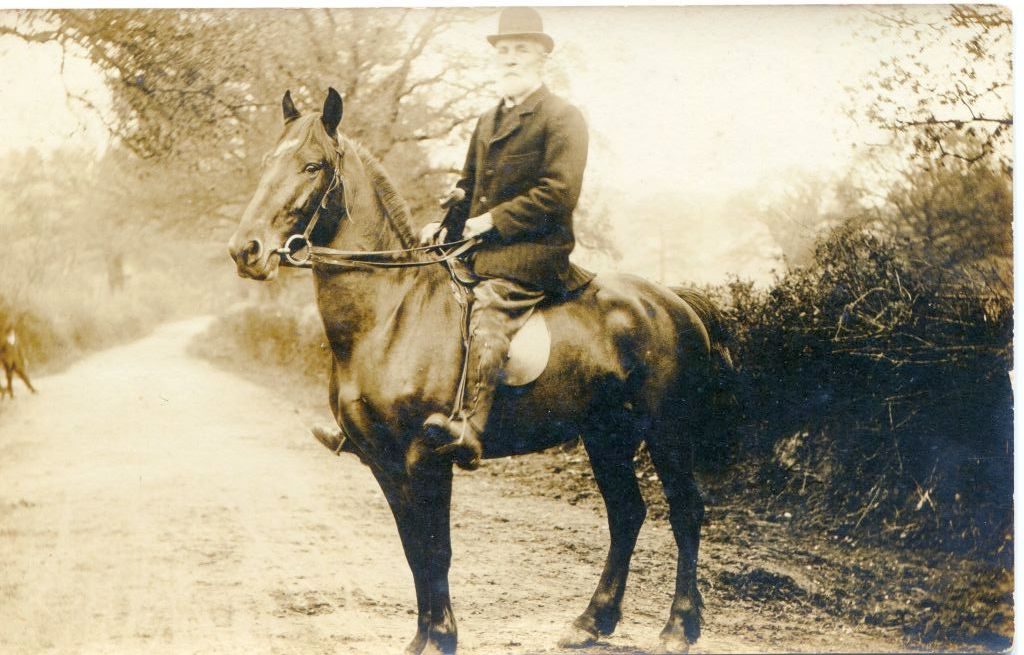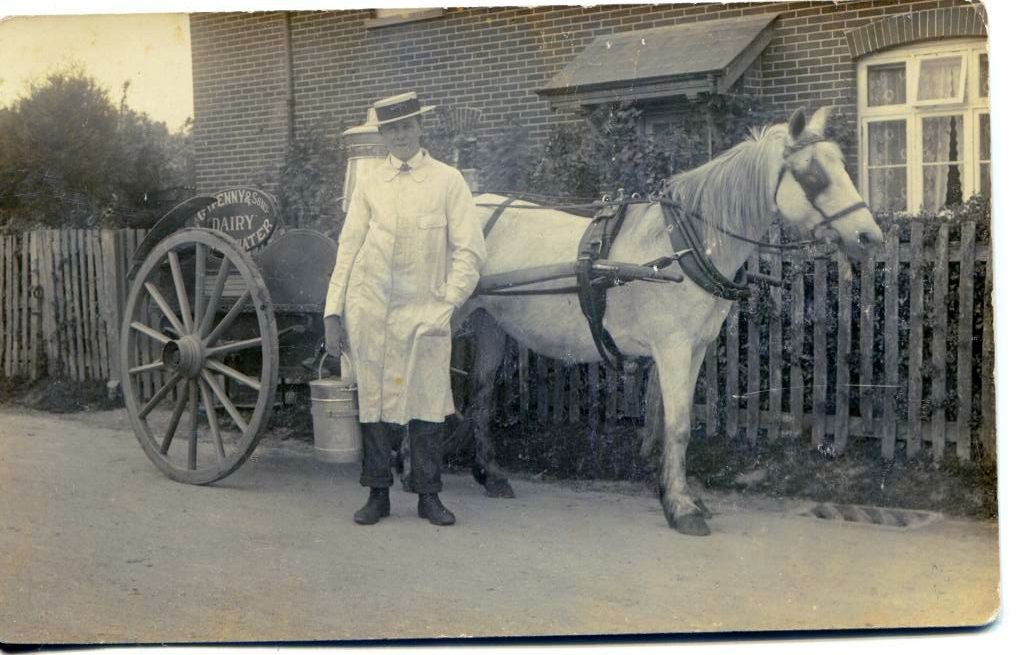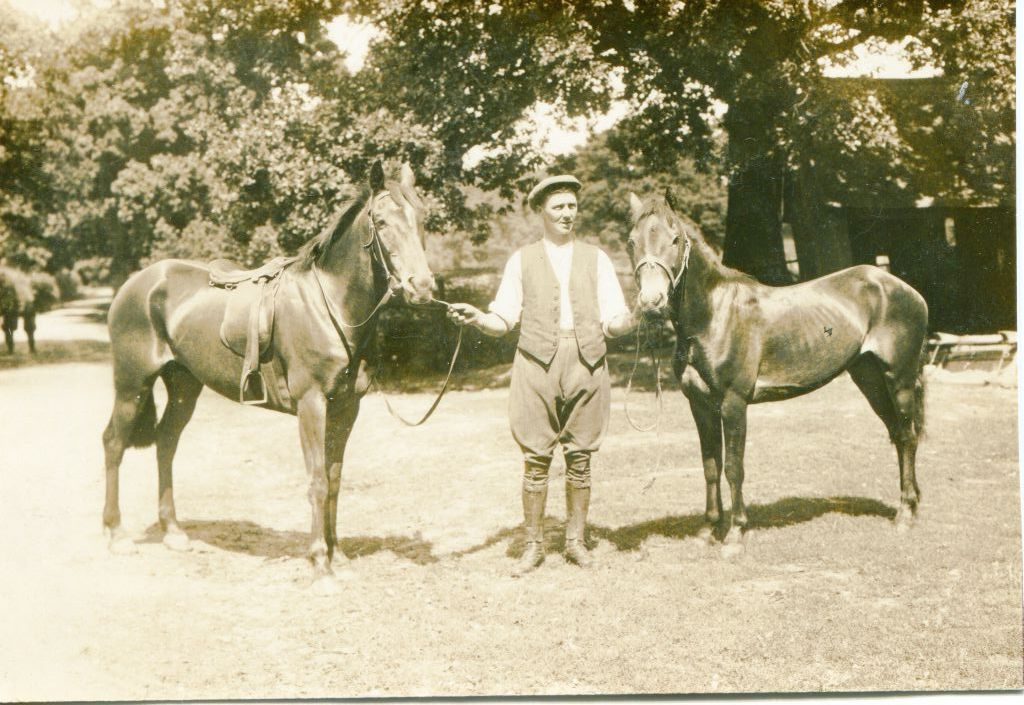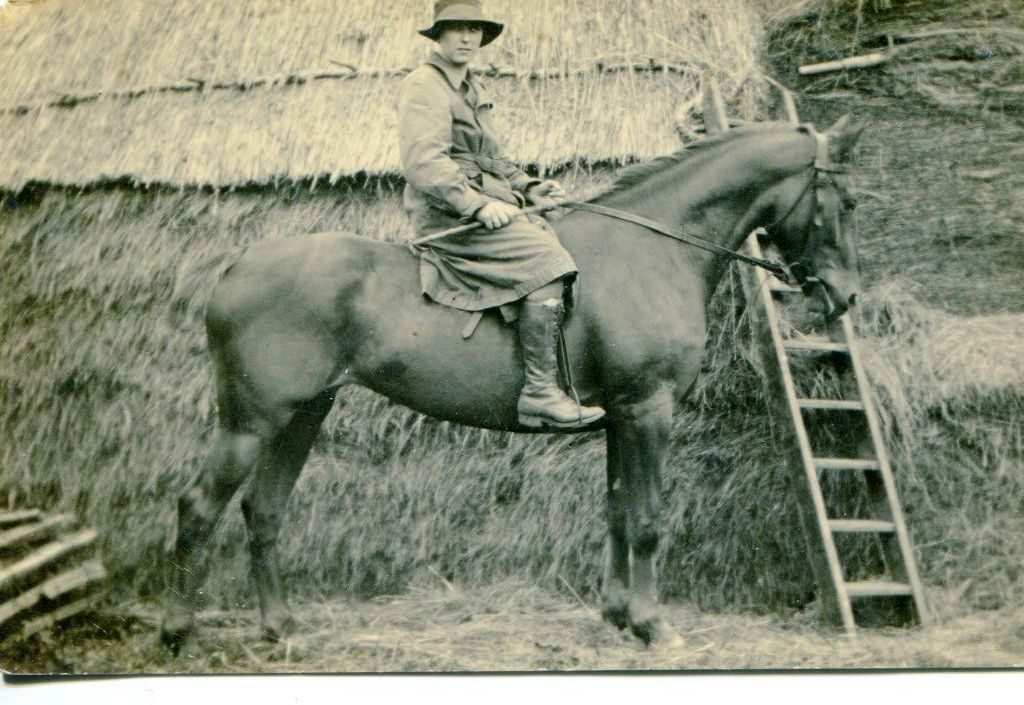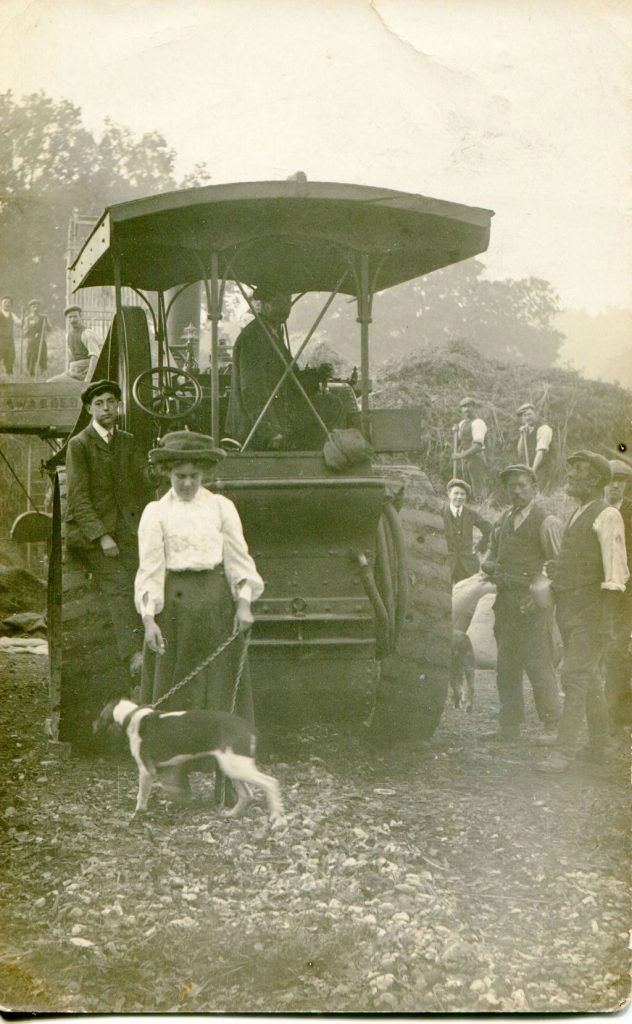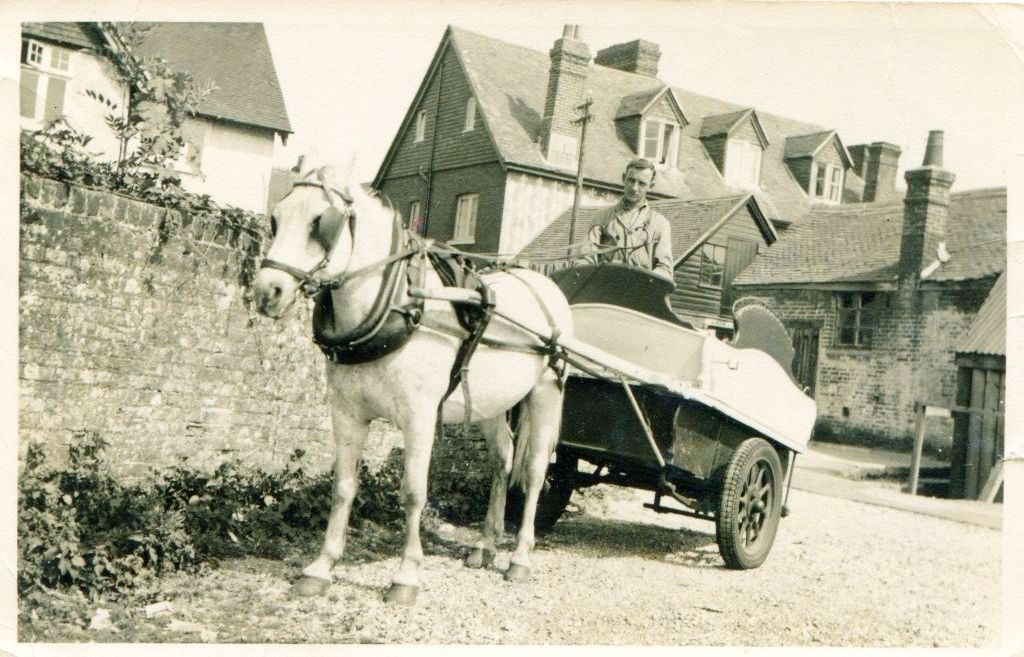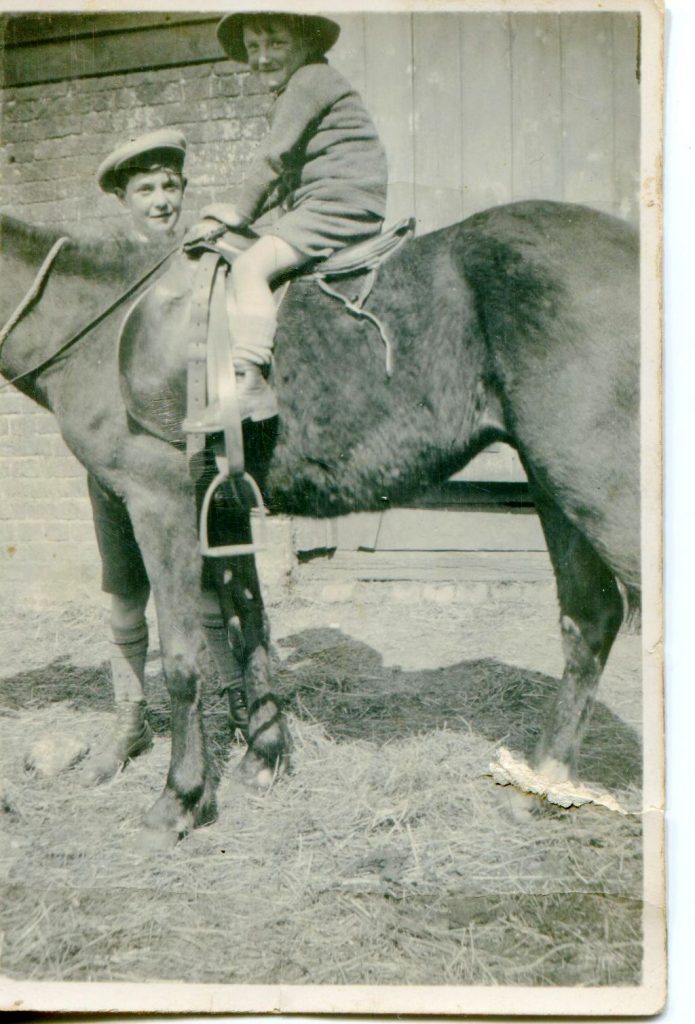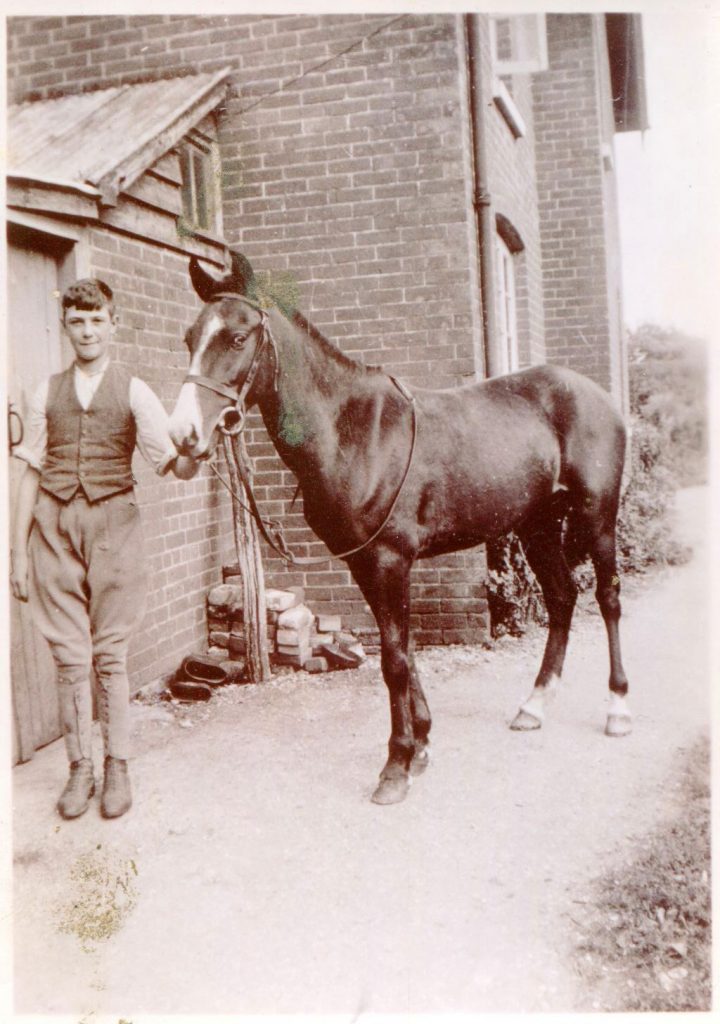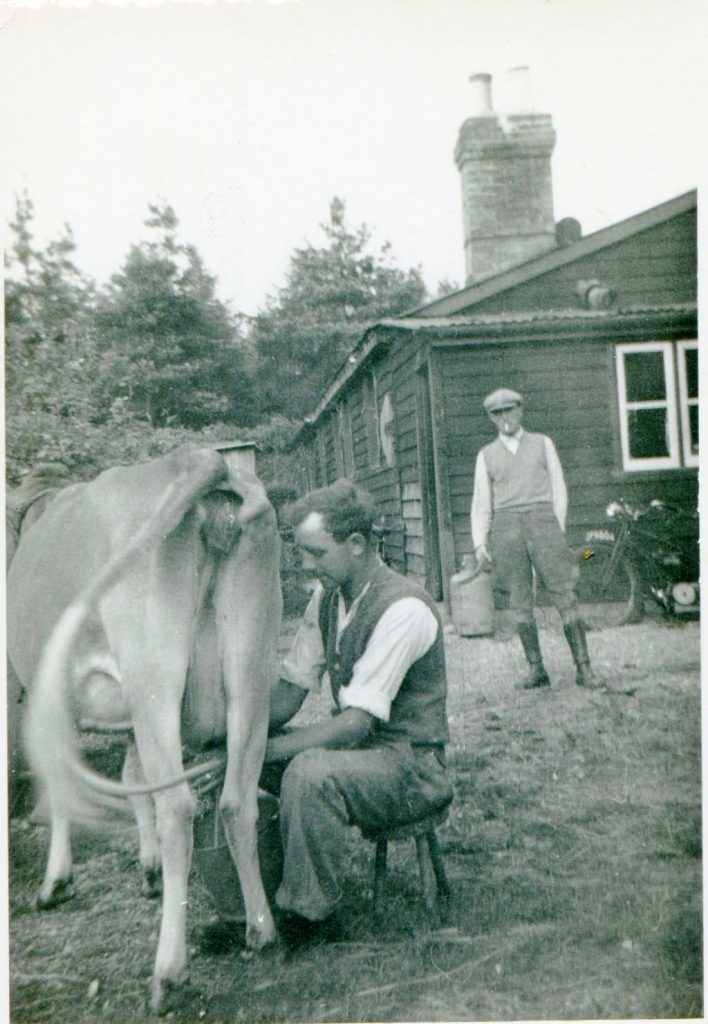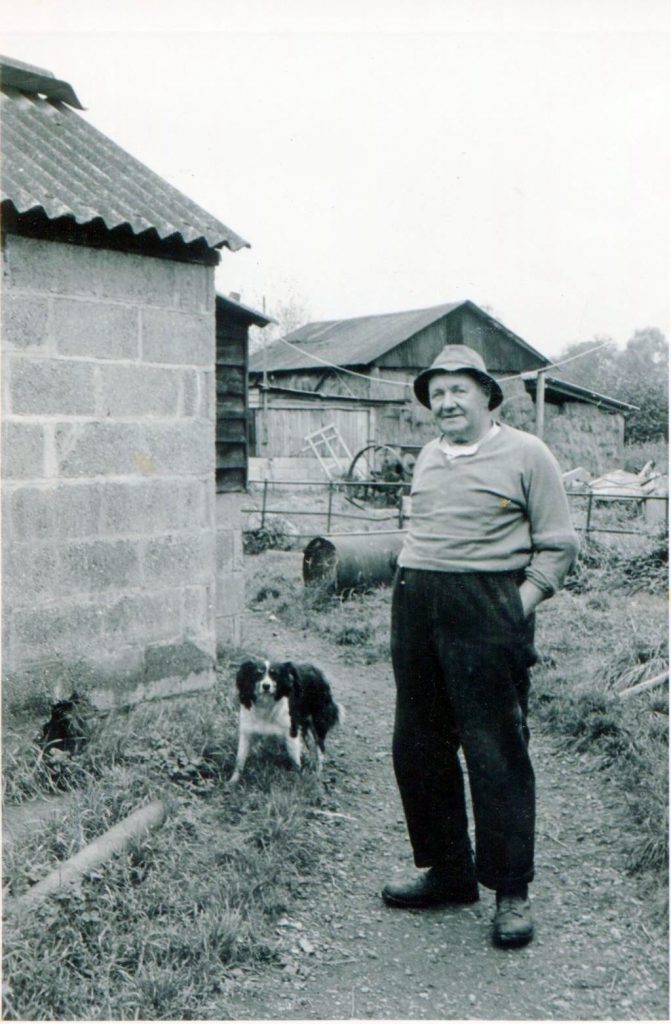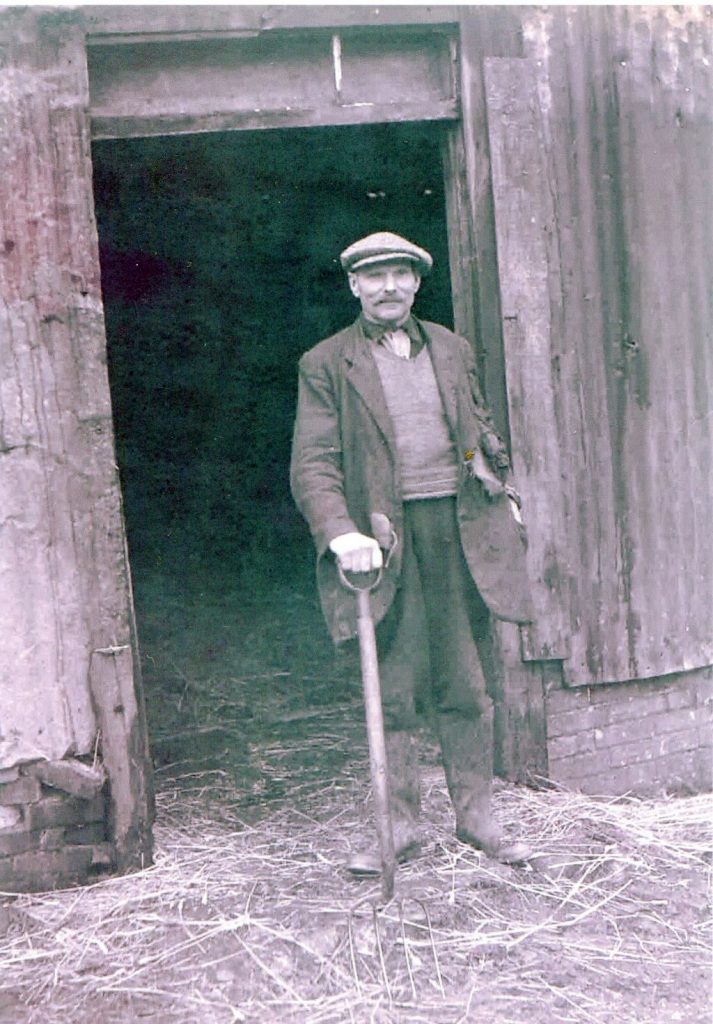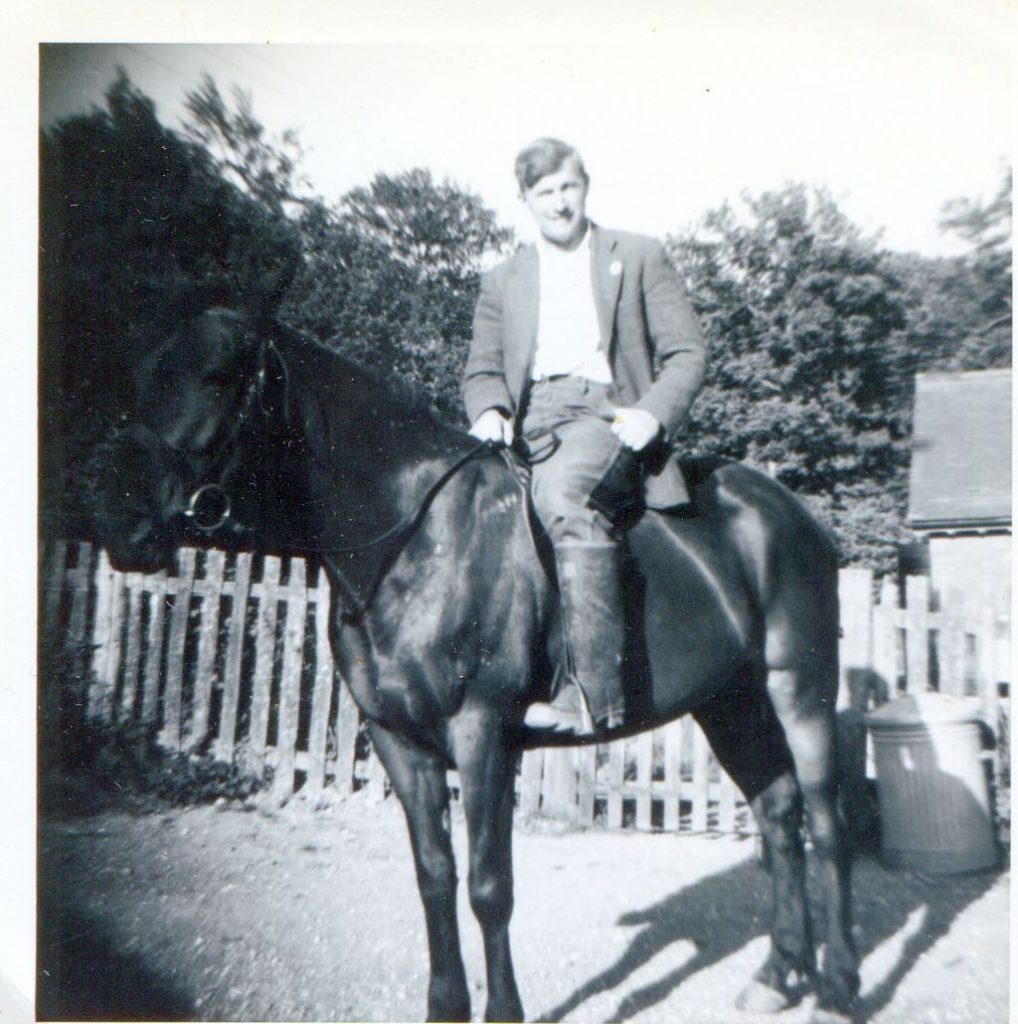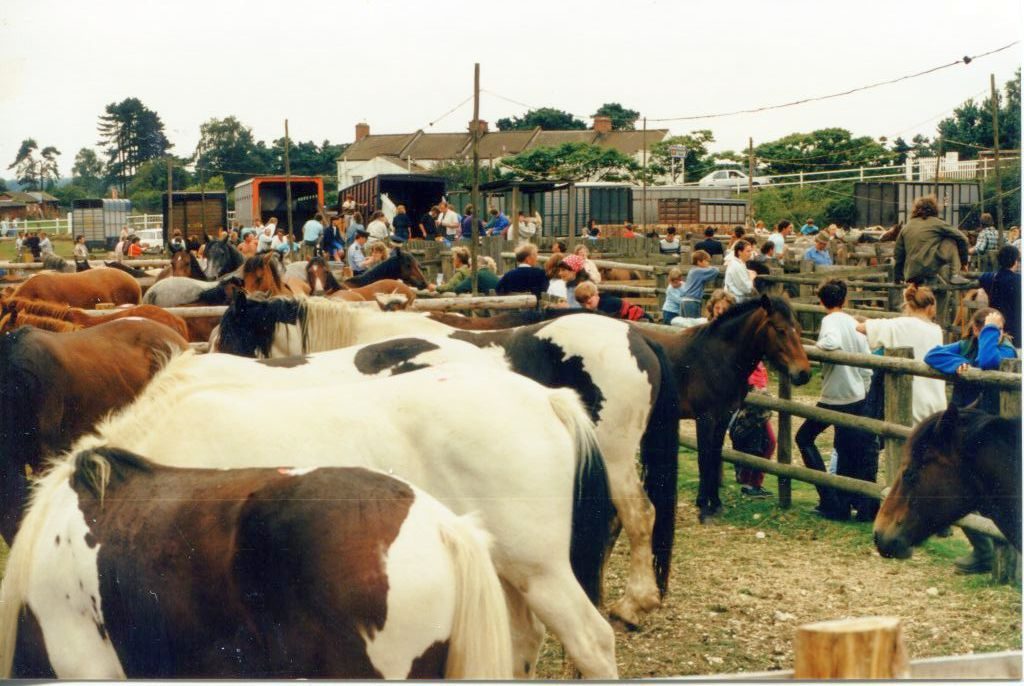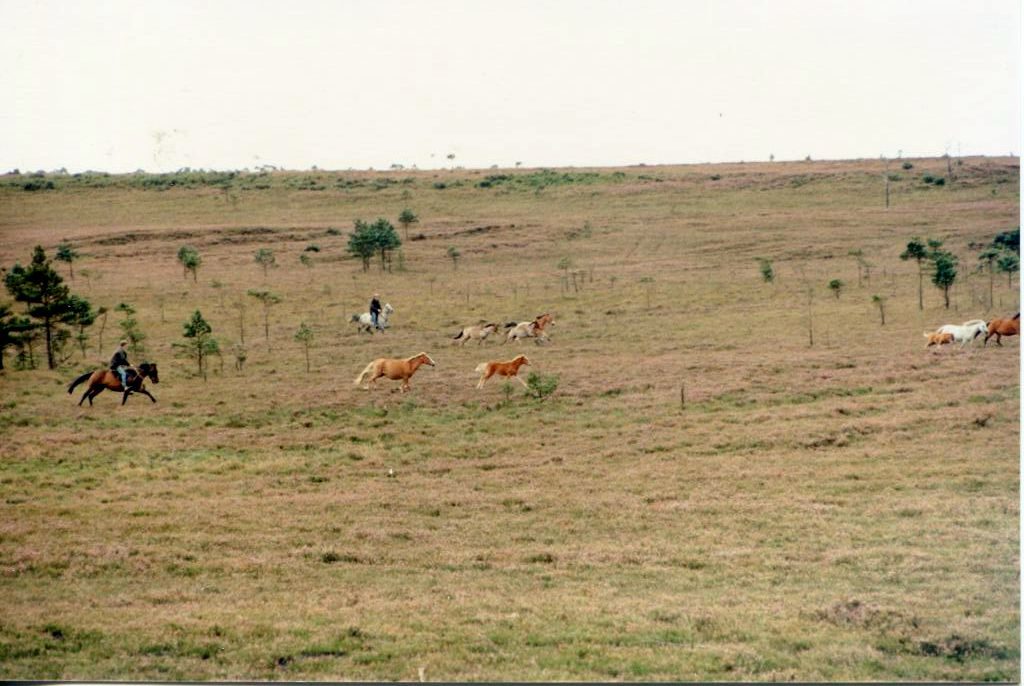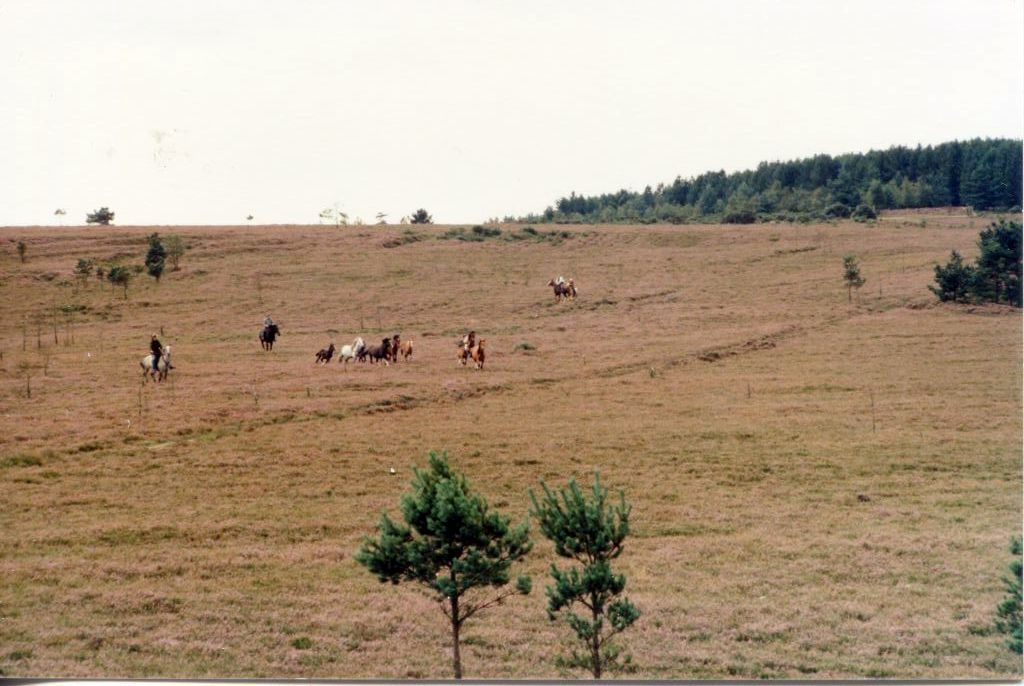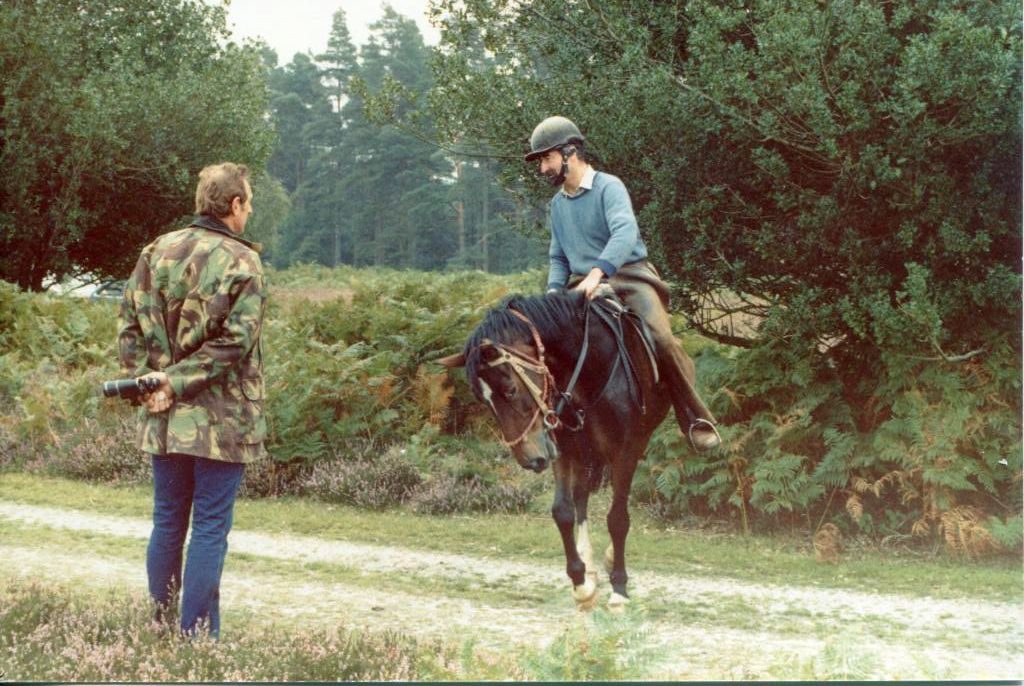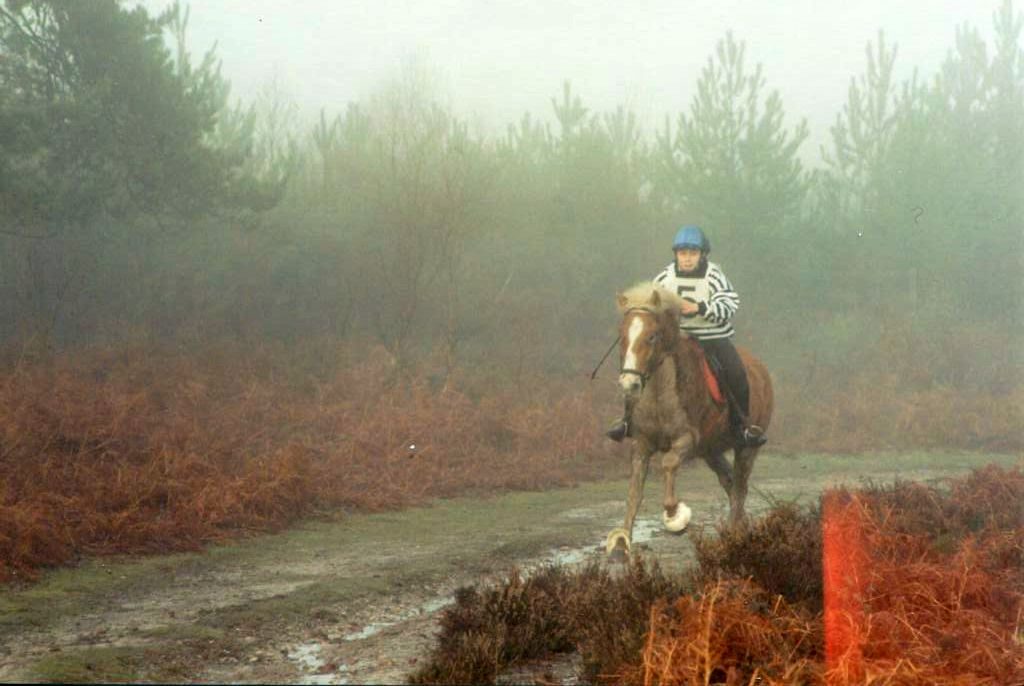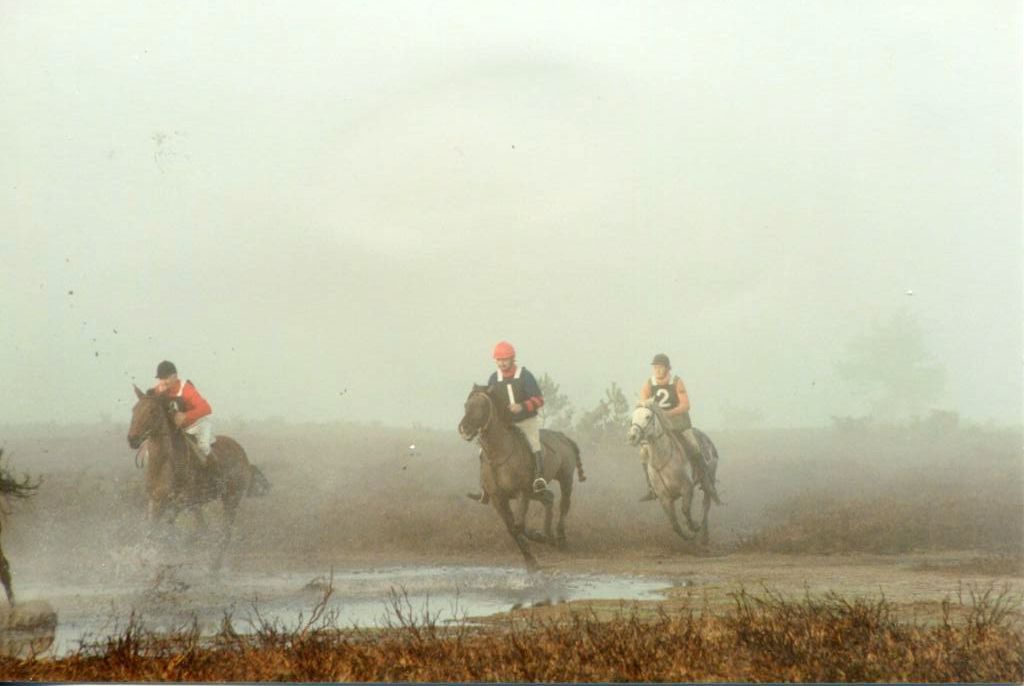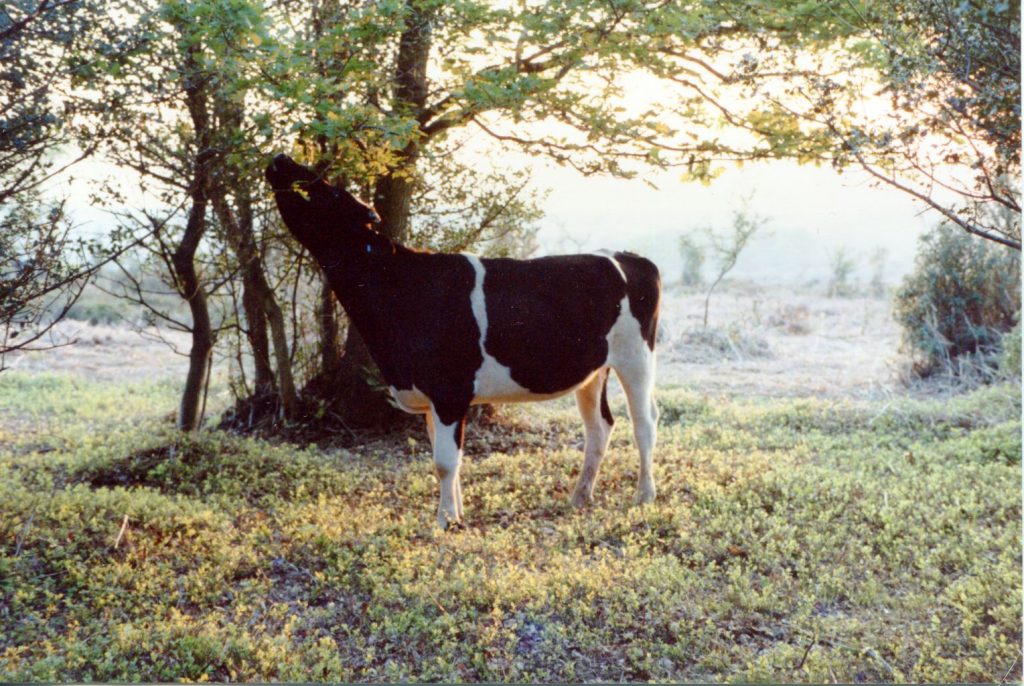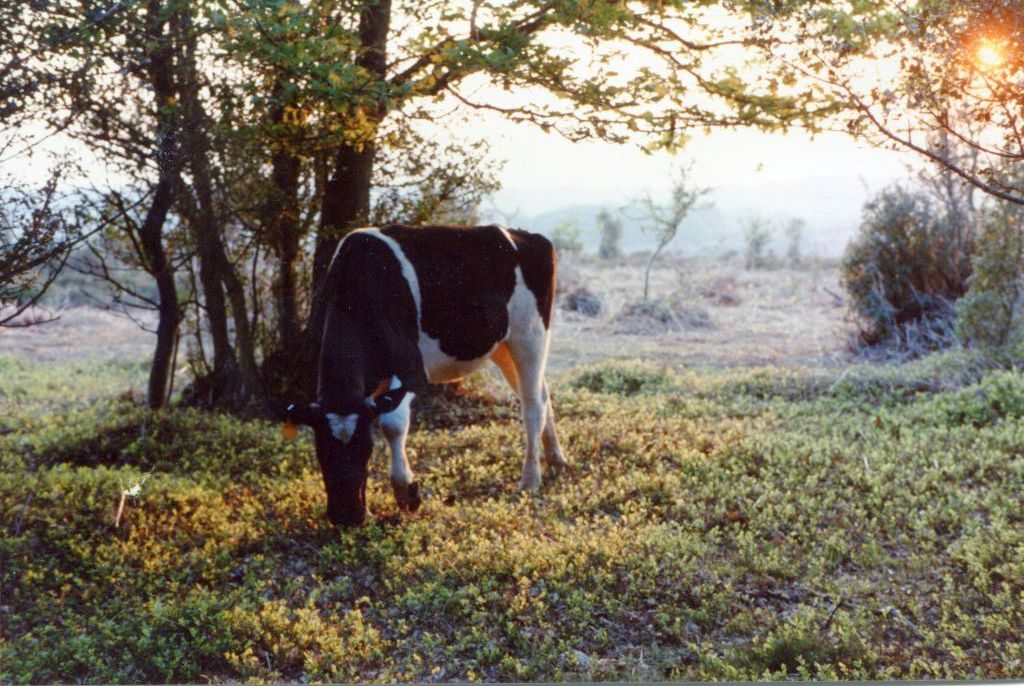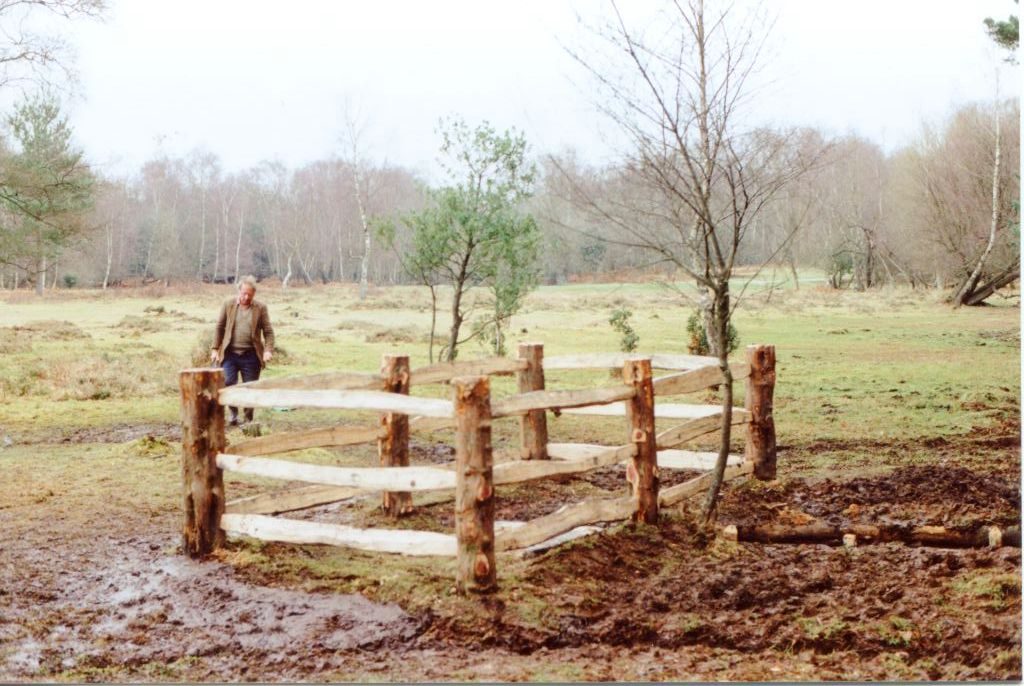Images: Caroline Page, copyright reserved. For any rights requests, please contact the New Forest Heritage Centre in the first instance.
Caroline Stride Trans 1 CH2 Duration: 5:12
CB: That’s brilliant. So tell me about your family, your own family now.
Caroline: My own family?
CB: Your sons.
Caroline: My sons. Well, we have three sons: Robert, who in his own right has ponies and cattle; he is married to Lyndsey and they have a twin, [information withheld] and [information withheld]; They are very involved in Forest life, Robert being now vice-chairman of the New Forest Commoners Defence Association; and has got very involved in Open Forest management with the CDA; and is really following in the footsteps I think of his father in being very concerned about how the open forest is managed and wanting to make sure that the Commoners views are upheld at committee level; and they’re very happily married and living at Acres Down and they have a small herd of beef cattle as well in their own name and they have New Forest ponies – and pigs. I forgot to mention pigs.
Andrew, who is now living at Burley happily married to his wife, Kirsty, and they have a twin and they are [information withheld] and [information withheld] and they have got a small herd of New Forest ponies which they – that are running on the Forest, they’re just beginning to get their feet down at Burley ‘cos they’ve only recently moved in to their house – only about ten months ago. We have Philip, who has moved into our old home at Bolderwood. And he is married to Johannah, very happily married to Johannah; and they have a son, [information withheld] and they’re expecting a baby in the spring of this year so we’re very pleased and excited about that event which – God Bless – all will go well there.
And he is just, just starting out on the journey of getting a small herd of beef cattle up together and they run New Forest ponies on the forest anyhow and they have a sow, a pig up at Bolderwood, like we always had a pig at Bolderwood, so we’re really very happy with how things have turned out really with the children. So far, so good, that’s all I can say.
CB: Commoning is, is
Caroline: Commoning’s my life! Yes it is, it takes over our whole life. You know, people look at you and think, you know ‘What do you do all that for?’ But it’s some thing that’s in your blood, it’s something you want to do, it’s a reason for going for a walk out in the Forest to find your cows, to find your ponies, or find the pigs. You might get roped into having to do a bit of running round, and stopping a gap somewhere along the line, and shutting the gate quick or ‘Stop that cow!’ or whatever but yeah, it’s something actually that, it’s something that I think it’s born in you, it was certainly born in me, my parents being dairy farmers as well as Commoners, and from a very early age we were out either feeding the calves or leading a pony round or something, there was – you know, we’ve always had the animals in our lives so it would be very difficult to imagine life without that animal commitment. And, yes, it is a way of life.
CB: Okay, so going back to your three sons, just tell me Robert’s prefix –
Caroline: Robert’s prefix is Cuffnells – now, he’s got Cuffnells now. Andrew’s… his brand is IS which was his great-grandfather’s brand on the Stride side, it was Isaac Stride so that is the IS; and the ponies that he has bought have obviously all been registered before and they.ve probably evolved from Cuffnell’s or Rushmoor; and with Philip, I think I can say the same with their prefix. I might be talking out of turn but, if I am I apologise and I will find out that information, but his brand is UP, Philip’s brand is UP and that is Charlie Penny’s old brand from the farm here at Blackwater; UP.


